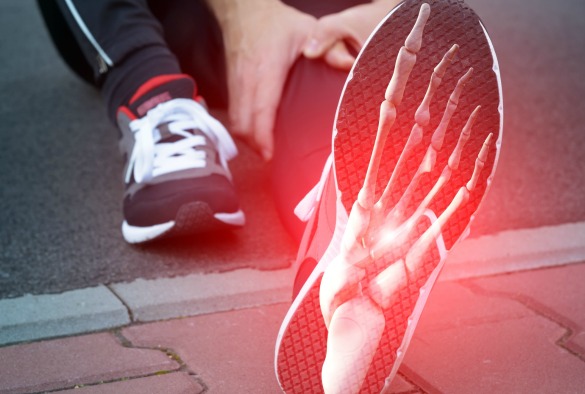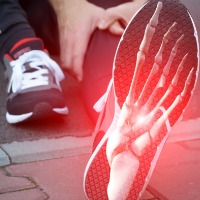
In a study involving elite athletes and military recruits University researchers, in collaboration with researchers from other institutions including the University of Sheffield and Nottingham Trent University, have successfully identified how certain genes can contribute towards a person’s susceptibility to stress fracture injuries.
This research provides a platform for further research into providing a personalised health approach to this common sports injury.
A stress fracture is a fatigue-induced fracture of the bone caused by repeated pressure over time. Unlike normal fractures, stress fractures are the result of accumulated trauma from repeated mechanical usage, such as running or jumping. As such, stress fractures are common injuries for athletes and military personnel.
The effect of heavy repeated mechanical usage causes an amalgamation of micro-damage in bone. The body responds to this through a process known as ‘bone remodelling’, in which damaged bone is removed and healthy bone is deposited. Bone remodelling occurs continuously through our lives and helps us keep our bones healthy.
New research area
Derby Professor of Anatomy and Cell Biology, Jim Gallagher, and his team at the University’s Institute of Ageing and Chronic Disease, aimed to identify the contribution a specific gene had to stress fracture injuries in two groups of volunteers made up of military recruits and elite athletes.
The researchers evaluated the contribution the specific gene, P2X7R, had on the volunteers. In the past they showed that mutations in this gene are associated with low lumbar spine bone mineral density and accelerated bone loss in post-menopausal women.
Professor Jim Gallagher said: “The genetic predisposition to develop a stress fracture is still a relatively new research area and our understanding of the risks that predispose individuals to develop a stress fracture is still very limited.
“The study found that two specific variations within the gene were associated with stress fracture injuries in healthy, exercising individuals. The precise mechanism by which these variations may influence stress fracture risk is unknown but may include decreased sensitivity of bone to mechanical loading or adverse changes to specific bone cells.
“The findings are the first to demonstrate an independent association between stress fracture injury and specific variations in purinergic receptor genes. This work builds on pioneering basic laboratory research over several years in which we first showed that purinergic receptors are expressed in bone cells and that they regulate the response of bone to mechanical loading.
“Further work with a larger sample group is needed to explain the mechanisms at work and to help us develop preventative measures and more suitable personalised treatments.”
The paper, entitled ‘Functional polymorphisms in the P2X7 receptor gene are associated with stress fracture injury’, published in The Official Journal of the International Purine Club, can be found here.
